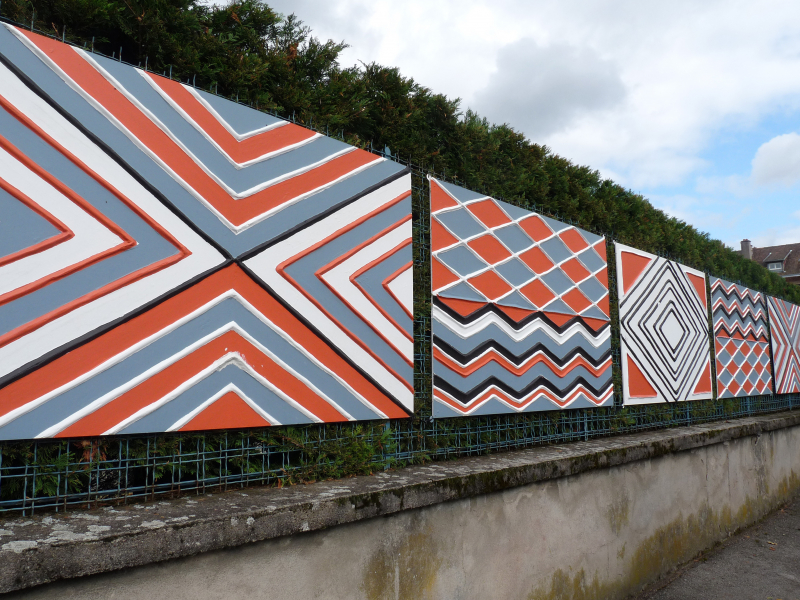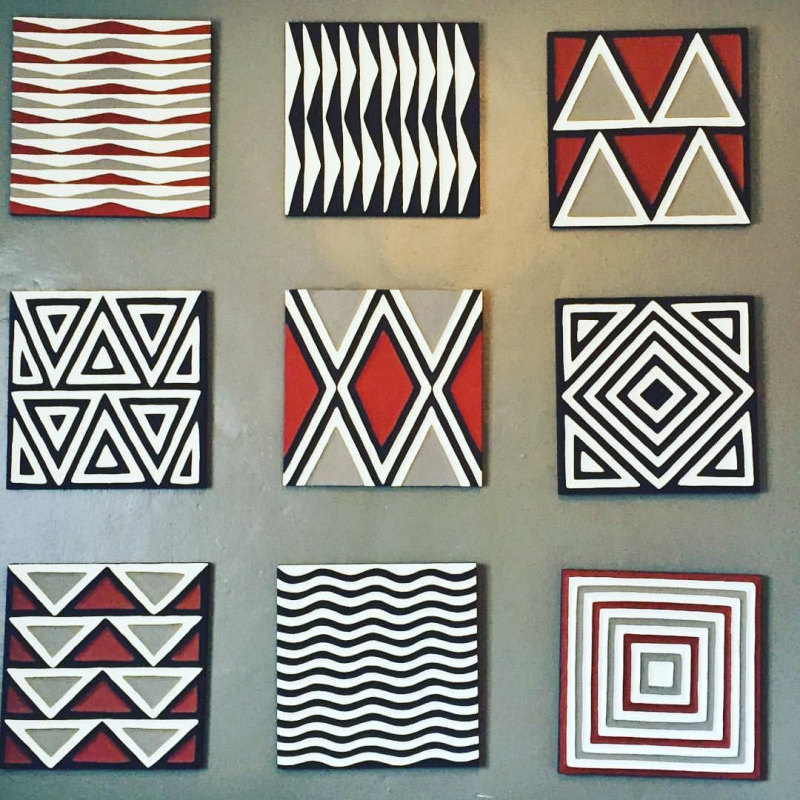Arts and crafts
Traditional arts and crafts are produced throughout the country, though the majority began as functional rather than decorative items. Woven baskets and bowls are particularly popular. Other arts and crafts include pottery/ceramic, painting, and wood carving, which are mostly made by artist students from Ecole d'Art de Nyundo, Rwanda's one-of-a-kind art school from 1959 to the present, where there are other different institutions that are attempting to train visual and audio arts today.
The south-eastern region of Rwanda is famous for imigongo, a unique cow dung art that dates back to the time when the region was part of the independent Gisaka kingdom. Cow dung is used to create the images, which are then applied to wooden boards in spiral and geometric patterns. The dung is mixed with ash, which kills bacteria and odors, and then hardened before being decorated with organic material colors. Traditional colors include black, white, red, grey, and beige-yellow, but other colors are increasingly being used. This is considered as one of the Unique Cultural Characteristics In Rwanda.
During the 18th century, the imigongo images were discovered inside the walls of huts in Kibungo as "magical" decorations. According to legend, Prince Kakira of Gisaka Kingdom in Nyarubuye invented imigongo as an interior decoration in the 1800s.












